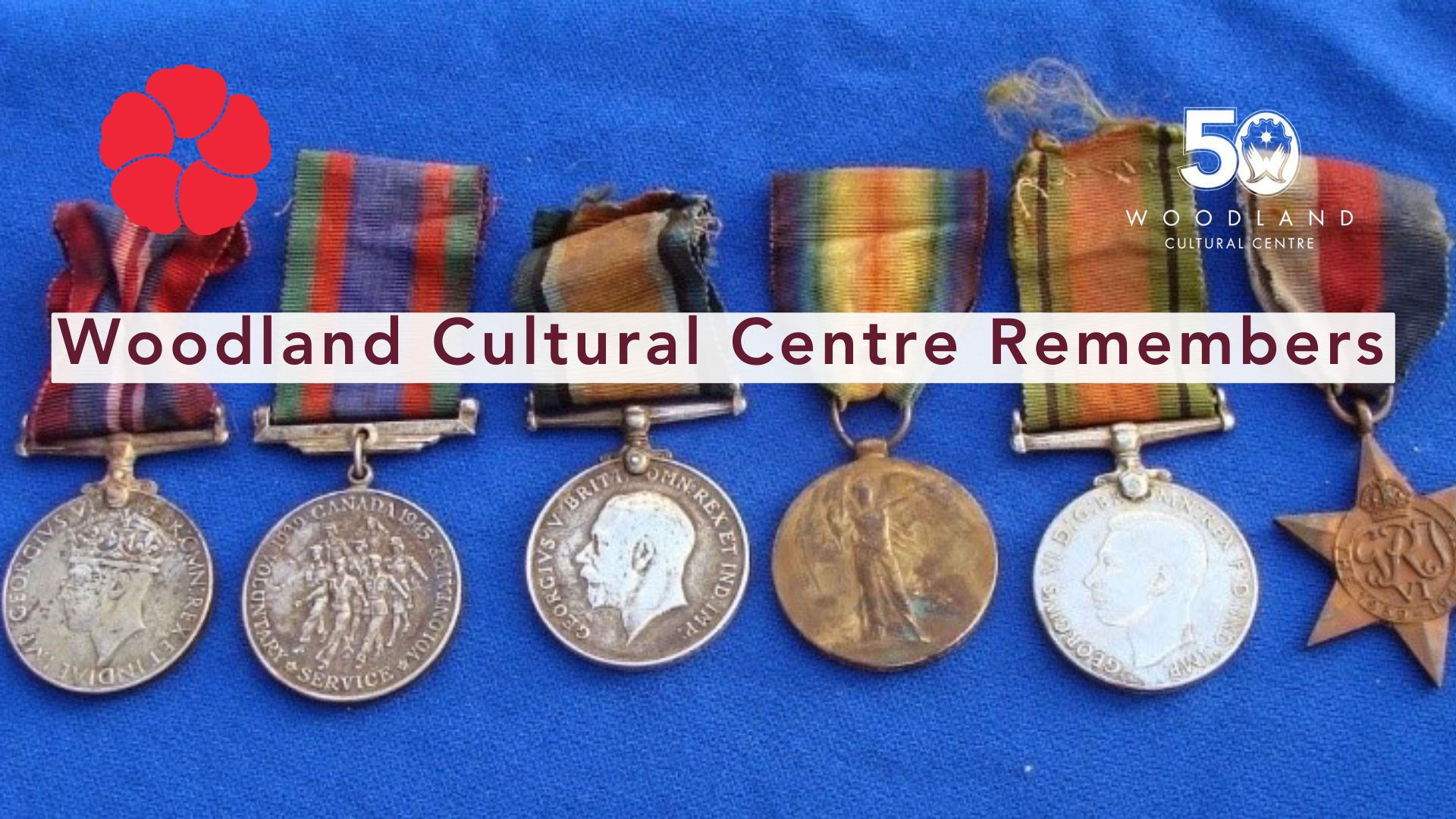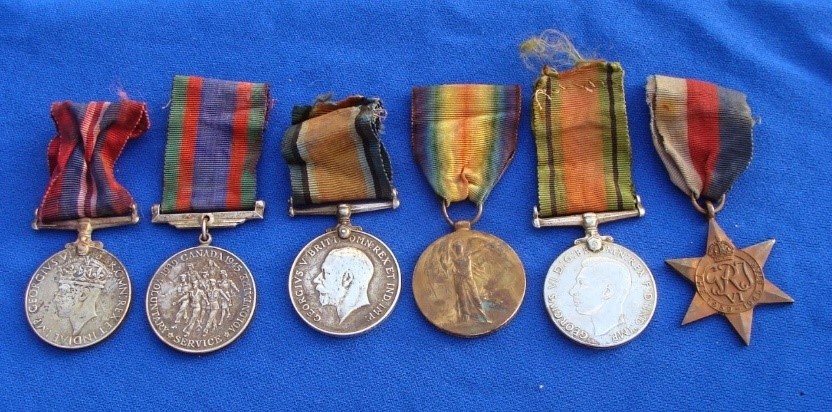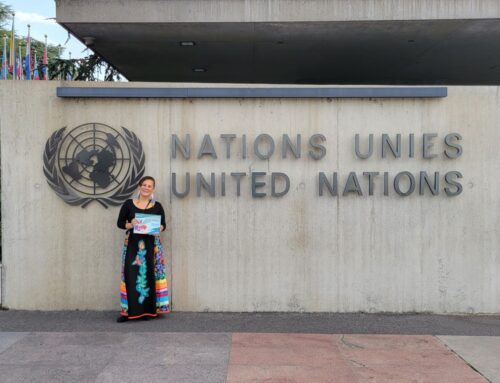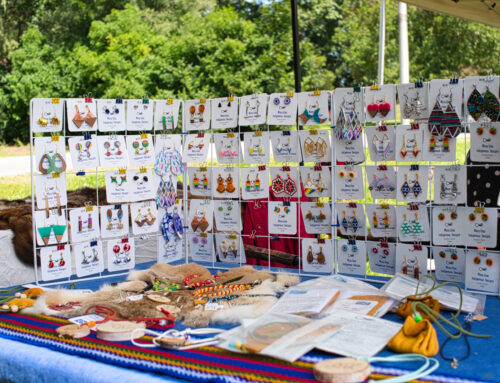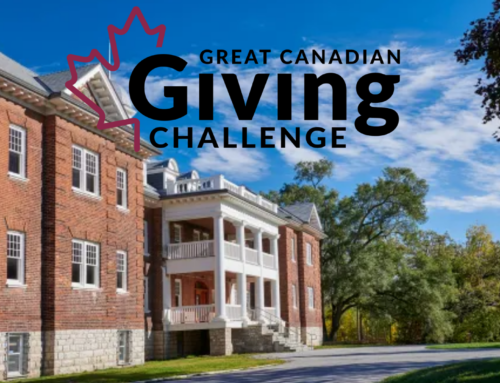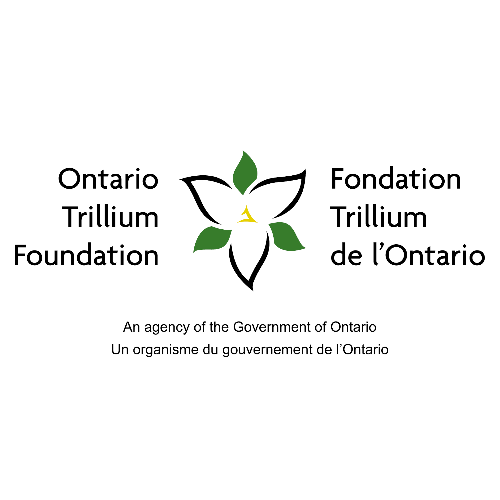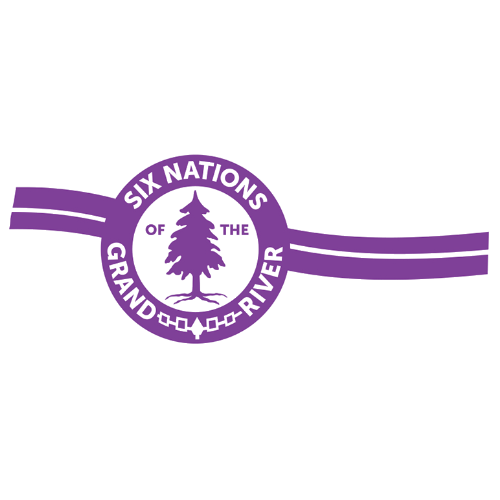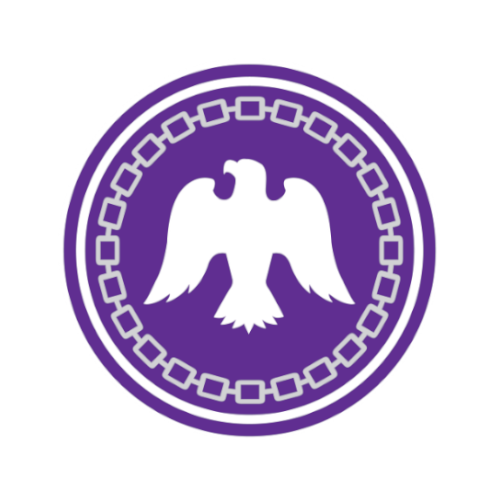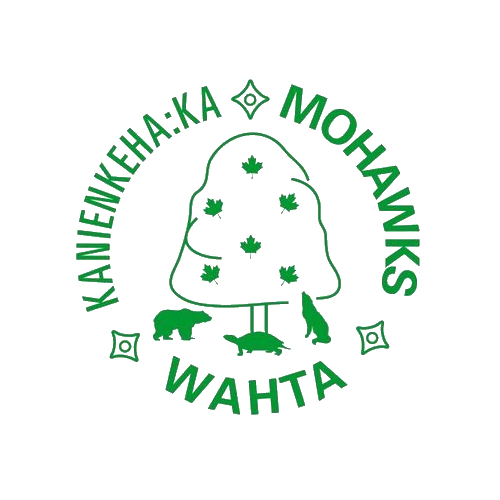We, the people of Tyendinaga, Wahta, and Six Nations of the Grand River, are the descendants of warriors. Warriors were honoured and valued members of our society; instrumental in maintaining the Great Peace and protecting the Confederacy. In keeping with the traditions of our ancestors, the Woodland Cultural Centre offers the stories of a few of our communities’ warriors. We honour all Hodinohsho:ni warriors – names known and unknown – everyday but especially November 11th.
The Commandant Brothers – Eli and Samuel
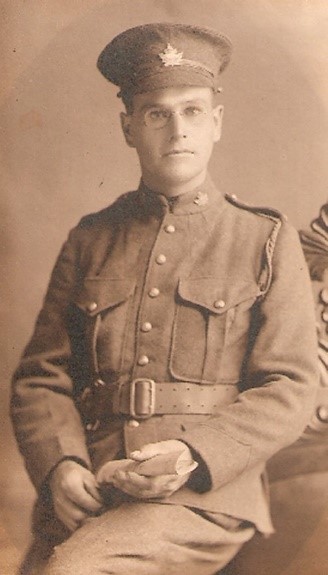
Samuel Commandant
Eli and Samuel Commandant, the sons of Napoleon and Dinah Commandant, of the Wahta Mohawks, enlisted in the 114th Battalion on the same day at Ohsweken, Ontario, April 8th, 1916. With three years age difference, Samuel was the older brother born in 1886. They were both unmarried and listed their mother as their next of kin on their attestation papers.
Their military service was remarkable similar with the brothers being assigned to the same battalions as they continued their service overseas in the fourth battalion and finally the first battalion. The final action Eli and Samuel saw in the First World War was at the Battle of the Scarpe (1918) in France. Beginning on August 26th, the Battle of the Scarpe was counted as an allied victory by August 30th and saw the capture of thousands of German prisoners.
Bad weather and heavy fighting marked the first three days of the battle. Eli was wounded on the 28th of August when a German shell landed in his position and exploded. Eli was covered in earth and debris, and needed to be dug out by comrades. He was unconscious for a few minutes and had shrapnel wounds on his face and head with bleeding from his ears. By mid-September 1918, Eli was evacuated to a military hospital in England complaining of dizziness, nausea, and ringing in the ears. He was diagnosed with literal shellshock – a concussion. Eli was approved for a return to light duty just as the Germans surrendered. Eventually, Eli would be discharged and returned home as “medically unfit” to serve due to his head injuries.
Just two days after his brother was injured, Samuel was killed in action on August 30th, 1918 in Upton Wood, France (a name given by the British Forces). The Battle of the Scarpe was ending, and Canadian troops were flushing out the remaining pockets of Germans in the area. In doing his duty, Samuel was killed by an enemy gun shot to his head. He is buried at the Upton Wood Cemetery with 225 other Canadian Service Members.
Hughie Norval Powless
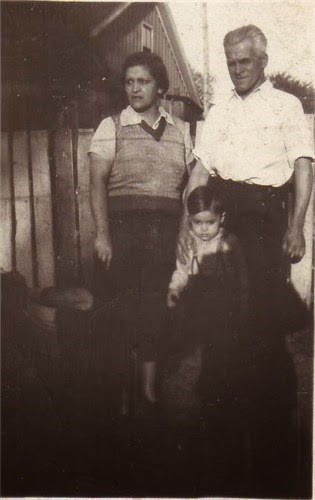
Hughie Norval Powless and Family
Born on January 5th, 1896, Hughie Norval Powless was the son of John and Margaret Powless of Tyendinaga. Hughie initially enlisted in Hamilton, ON on February 21st, 1916, as was living in that city after having attended the Mohawk Institute. His assigned unit was the 173rd Highlanders Battalion, Canadian Expeditionary Forces, which sailed for England on November 14th, 1916. Hughie was not with the Battalion when it left Canada and was listed as a Deserter since June of 1916. This may have had been caused by his marriage occurring over the same period and the birth of his son. Hughie was transferred to the 215th Battalion out of Brantford, ON and sailed to England with this unit in April of 1917. He was demobilized in April 1919 and returned to Hamilton, after spending a month in a Toronto Hospital suffering from influenza and pneumonia caught on the return voyage.
Hughie and his family enfranchised in 1922 (meaning they took up the right to vote in Canada and were removed from the band list of Tyendinaga). As an enfranchised Canadian, Hughie once again enlisted in the Canadian military with the Argyll and Sutherland Highlanders of Canada out of Hamilton in 1939 with the onset of World War Two. He was 44 years old. The Argyll and Sutherland Highlanders had absorbed his first military unit the 173rd Highlander Battalion in 1920.
Hughie Norval Powless has sent to England to fight a war for the second time in his life. He was momentarily sent to France but his unit had just arrived to Brittany when, in the same day, it was called back to England as the German army was rapidly advancing. Hughie was then sent back to Canada to work with the army training school in Hamilton at his request. He was discharged from service in October 1942 as “unable to meet the required military physical standards.”
The Woodland Cultural Centre was gifted Hughie Norval Powless’ military medals from both World Wars by Bob Richardson, a Military Historian who rescued these medals from eBay and did research on their owner.
Percy Cayuga
Percy Wallace Cayuga was a musician to his core. He played a multitude of horn instruments and served as the Band Master of the Tuscarora Indian Band for decades. He was also a farmer, a militia member (in the Haldimand Rifles and the Dufferin Rifles), and a husband and father. When Percy enlisted in 1916 he was 27 years old, and a married father of three. Having served in the militia, Percy was an established member of the militia band. Many of the band members enlisted with the 114th Battalion in 1916 and made up the Battalion Band.
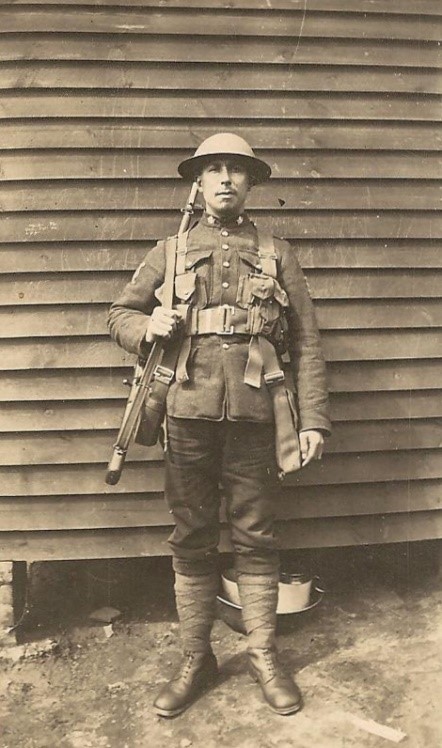
Percy Cayuga
Along with the rest of the 114th Battalion, Percy shipped out to England October 31, 1916 arriving at Sandling November 11, 1916. All new arrivals were put in quarantine camps upon arrival (where the picture of Percy was taken by fellow band member, Lloyd Curley) and were examined for contingencies and other health concerns. Many of the 114th Battalion caught the mumps at Sandling so the entire Battalion was quarantined for weeks.
The 114th Battalion Band was kept intact for several months once in England. The band, the battalion flag (made by the women of Six Nations of the Grand River), and the uniquely carved flagpole featuring a bust of Joseph Brant, were used in recruitment drives across Great Britain. Showcased to British citizens as examples of volunteer recruits that enlisted despite being exempt from conscription, it is no doubt their Indigenous roots were also on exhibit. Both as a source of the exotic and to shame the British males with the willingness of “lesser” men volunteering to serve.
At the end of the recruitment parades (In Scotland, the band members chipped in to donate monies to the construction of housing for returning Scottish soldiers.), the 114th Battalion band was disbanded with its members primarily headed to the 107th Battalion. Percy always maintained his affiliation with a military band, even when sent to the field (combat). He was a member of the First Canadian Division Band throughout his time in France and upon his demobilization in 1919.
After his World War One service, Percy continued to dedicate himself to music. He stayed on with the Tuscarora Indian Band out of Six Nations of the Grand River in the horn section and as Band Master. Percy was injured when he took a job in a California circus band in the 1940s. The circus tent caught fire and Percy suffered severe burns to his body. After his recovery and despite the scarring, Percy played his instruments and performed music for decades. He lived to be 94 years old.
(This one is for my cousins. Percy was their grandfather.)
Interested in More …
For those interested, the Woodland Cultural Centre mounted a World War One commemorative exhibition entitled “Veterans, Warriors, & Peacekeepers” in 2014. The presentation of 114th Battalion reproduction flags to the descendants of the enlisted members from our three support communities is viewable on YouTube.

